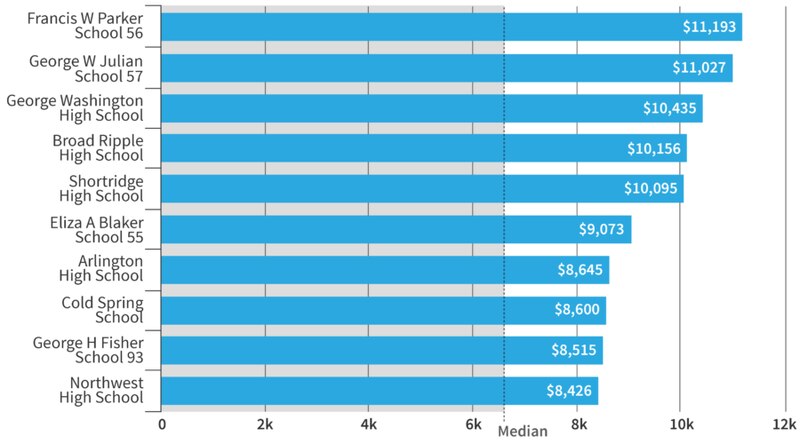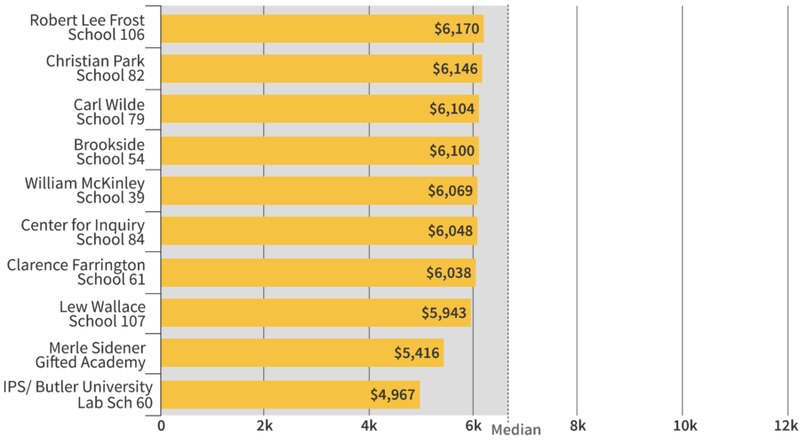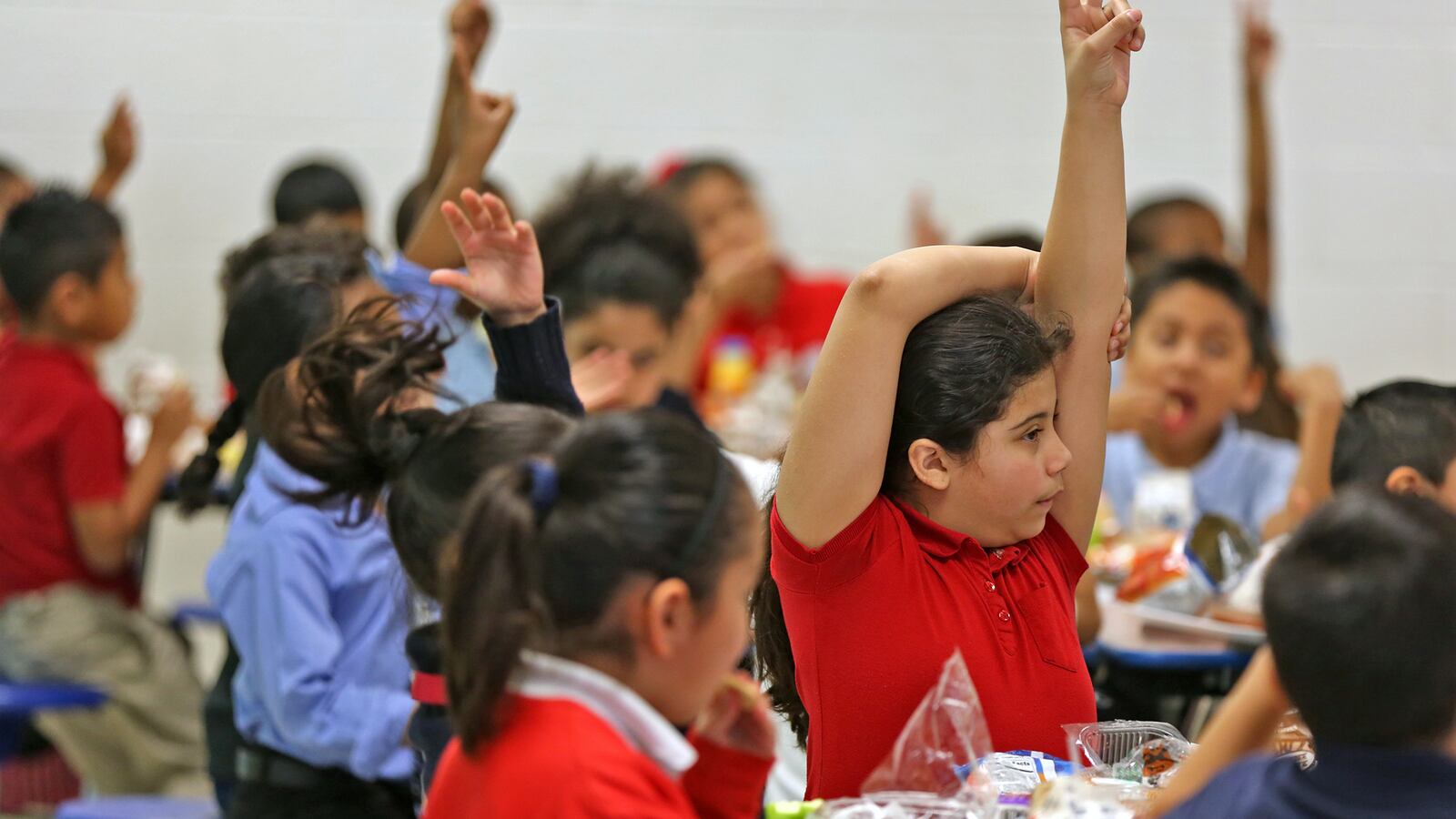A year ago, Indianapolis Public Schools embarked on a radical change: Instead of patching together school budgets based on each school’s programs and challenges, district leaders decided to distribute money through a clear formula based on students’ needs.
The overarching principle was that schools with many poor students should get more from the district than schools with middle-class students — and that principals should get to decide how that money is spent.
Now, the district has revealed how each school fared under the new formula, used for the first time this year, and it’s apparent that the impact has been limited so far.
In large part, that’s because the district made efforts to ensure a smooth transition for schools used to a different way of doing things. The district is also still sending millions of dollars directly to schools based on their programming, not their students’ needs.
As a result, many schools with needy students still got less from the district than schools with more middle-class students, according to budget projections provided to Chalkbeat by the district.
For example, last year nearly half the students at School 79, also known as Carl Wilde, were learning English, and the district projected that 86 percent would be in poverty this year. Yet the neighborhood school on the west side has among the lowest per-student funding in the district. It was budgeted to receive $6,104 per student.
At the same time, the Center for Inquiry at School 70 serves a much less needy population, with a projected poverty rate of 42 percent. But the northside magnet school was budgeted to receive $7,438 per student.
10 highest funded schools per pupil in Indianapolis Public Schools

10 lowest funded schools per pupil in Indianapolis Public Schools

Data provided by Indianapolis Public Schools. Graphics by Sam Park.
Over the last decade, student-based allocation — also known as weighted student funding — has been embraced in urban districts across the country, including Boston, Chicago, and Denver. It’s also similar to the model that the Indiana legislature uses to decide how much districts get in state funding.
In part, the aim is to make sure districts send money to schools based on student needs rather than other factors, such as whether a band program is particularly beloved or a school has an influential parent organization.
It’s a problem Carole Craig, a retired IPS principal who is still a vocal advocate for educational equity, saw in action when she worked for the district. Without clear rules driving budget decisions, powerful principals and school communities would lobby for more, she said.
“It was political,” she added.
Student-based allocation is supposed to help solve that problem by creating budgets using rules and making it publicly transparent how much each school is getting and why. For IPS, that’s beginning to happen this year, with schools getting about 60 percent of their funding through the new allocation formula. The rest of their budgets are still being distributed outside that formula.
How much is your school getting per student?
(The per-student funding figures in this story include the money distributed through the student based allocation formula and other sources. The full allocations were provided to Chalkbeat by the district. Most innovation schools, which are managed by outside nonprofits or charter operators, are not receiving funding through the student-based allocation formula. The funding levels for those schools is available on the district website.)
But as the gap between School 79 and School 70 reveals, there are still big disparities in how much is spent per student. They exist because the school district, like others that have shifted to student-based budgeting, took steps to mute the transition to the new funding system.
The district limits how much budgets can grow or shrink so schools won’t lose too much money in one year, using what it’s calling “transition adjustments.” Plus the district is continuing to give schools extra money for many reasons beyond how many students they have and how needy those students are.
At the discretion of Superintendent Lewis Ferebee, the district is propping up the budgets of schools that have struggled academically. Schools are also getting extra money for programs such as Montessori that parents and students choose. The district is also budgeting nearly $1.3 million for schools that would struggle to operate without extra money, typically because of low enrollment.
Finally, the district is providing services outside the new funding formula for students in special education and those who are learning English, because there are legal requirements for meeting student needs. The district also distributes federal funds, which have specific rules, outside the formula.
The impact of all these choices is that some schools with incredibly high needs students are getting shortchanged.
The northside magnet, School 70, receives more than $288,000 in transition funding and nearly $56,000 to support its International Baccalaureate program, an academic approach that emphasizes inquiry-based learning. In contrast, School 79, the neighborhood school serving many immigrants on the west side, is losing out on more than $268,000 it would normally receive based on enrollment and student needs because of the transition adjustment.
Once the transition period is over, that means that School 79 could get a big bump in funding. But it also means that the longer the district takes, the more money the school will miss out on.
The new funding system is revealing funding differences that have long existed, said Craig. But she added, what’s important is what the district does next to make funding fairer.
“I’m going to believe since they’ve spent so much time doing this, there is a plan,” she said. But “how long is it going to take?”
District officials have said that the biggest challenge to student based allocation is declining state revenue. The district simply doesn’t have that much to dole out.
That could change in the future. District officials recently announced that they would likely ask voters to approve a property tax increase of $92 million per year — which adds up to almost $2,900 per student.
It’s not clear how the district would use that cash, in the event that the funding request makes it to voters and they approve.
One of the top priorities, however, is increasing teacher pay, which would likely spread the money across schools without prioritizing those that have comparatively low funding.
“I think it will benefit the climate at every school in the district,” said school board president Mary Ann Sullivan. “It won’t just make things better for a chosen few.”
District leaders also emphasize that the current funding model is not set in stone. It will be reviewed each year, and leaders could decide to change the formula or eliminate some of the outside pools of funding. The school board is expected to review the funding formula for next year this week.
Ferebee told Chalkbeat that he didn’t know how long it would take for the district to increase its use of student-based allocation.
“We want to make sure that we are smart and strategic about how we implement the model,” he said.

